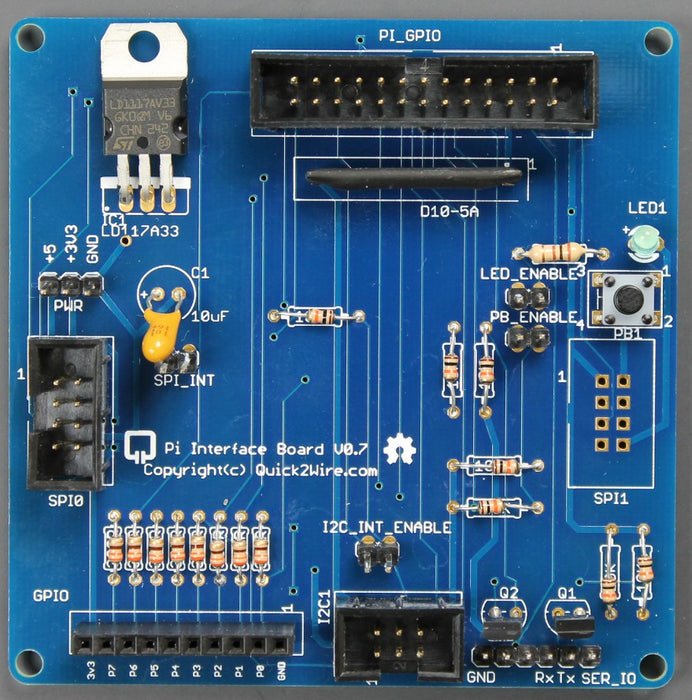
Quick2Wire Interface Board Kit
Sold out
£14.28
inc VAT
Original price
£11.90
-
Original price
£11.90
Original price
£11.90
£11.90
-
£11.90
Current price
£11.90
ex VAT
SKU Q2W-INTERFACE
The Quick2Wire® Interface Board Kit gives you safe and easy access to all the features on your Raspberry Pi’s expansion header. The Board and its components are supplied in kit form. You will also need a Raspberry PiTM computer with an SD card, power supply, keyboard, display and cables.
We also provide Python libraries to help you drive connected devices. All the libraries include working examples, and you’ll find easy-to-follow tutorials at quick2wire.com
The board provides easy access to
- 8 General Purpose I/O (GPIO) pins
- an Inter-Integrated Circuit (I2C) interface
- two Serial-Peripheral Interface (SPI) channels
- serial communications
- 3.3 volt and 5 volt supplies, and ground
The board connects to the Pi with a 26-way ribbon cable, included in the kit.
The 3.3 volt regulator on the Pi has limited power, so the Interface Board has its own 3.3 volt regulated supply which it makes available to add-on boards.
GPIO
We protect the eight GPIO pins from mistaken connections with series resistors and diodes. You can connect GPIO channels 0 and 1 to the on-board push button and LED with jumpers. Other jumpers can connect interrupt signals from I2C or SPI devices to GPIO 6 and 7.
I2C
The Pi’s expansion header brings out the SDA and SCL lines that make up an I2C interface. The I2C protocol allows you to connect over 100 I2C devices to a master, each with its own address. We have developed two I2C boards to begin with: a Port Expander, which gives you another 16 GPIO pins, and an Analogue Board.
Our I2C bus carries the SDA and SCL signals used by the I2C protocol along with ground, 3.3 volts and a 5 volt supply.
SPI
The Pi’s expansion header gives access to two SPI channels, each of which normally gives access to a single SPI device. There are many readily available SPI devices including OLED displays, accelerometers, fast ADC and DAC chips.
You can also connect Port Extenders to SPI, to give more GPIO pins. These can be driven much faster than they can through I2C.
Serial Communications
Documents

* Ribbon cable supplied will be slightly shorter.
